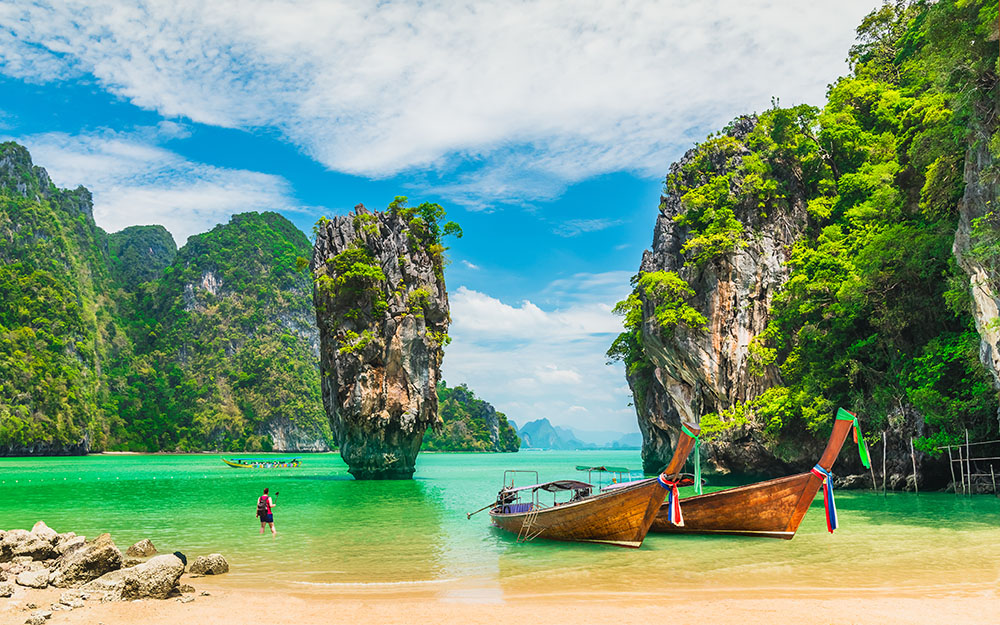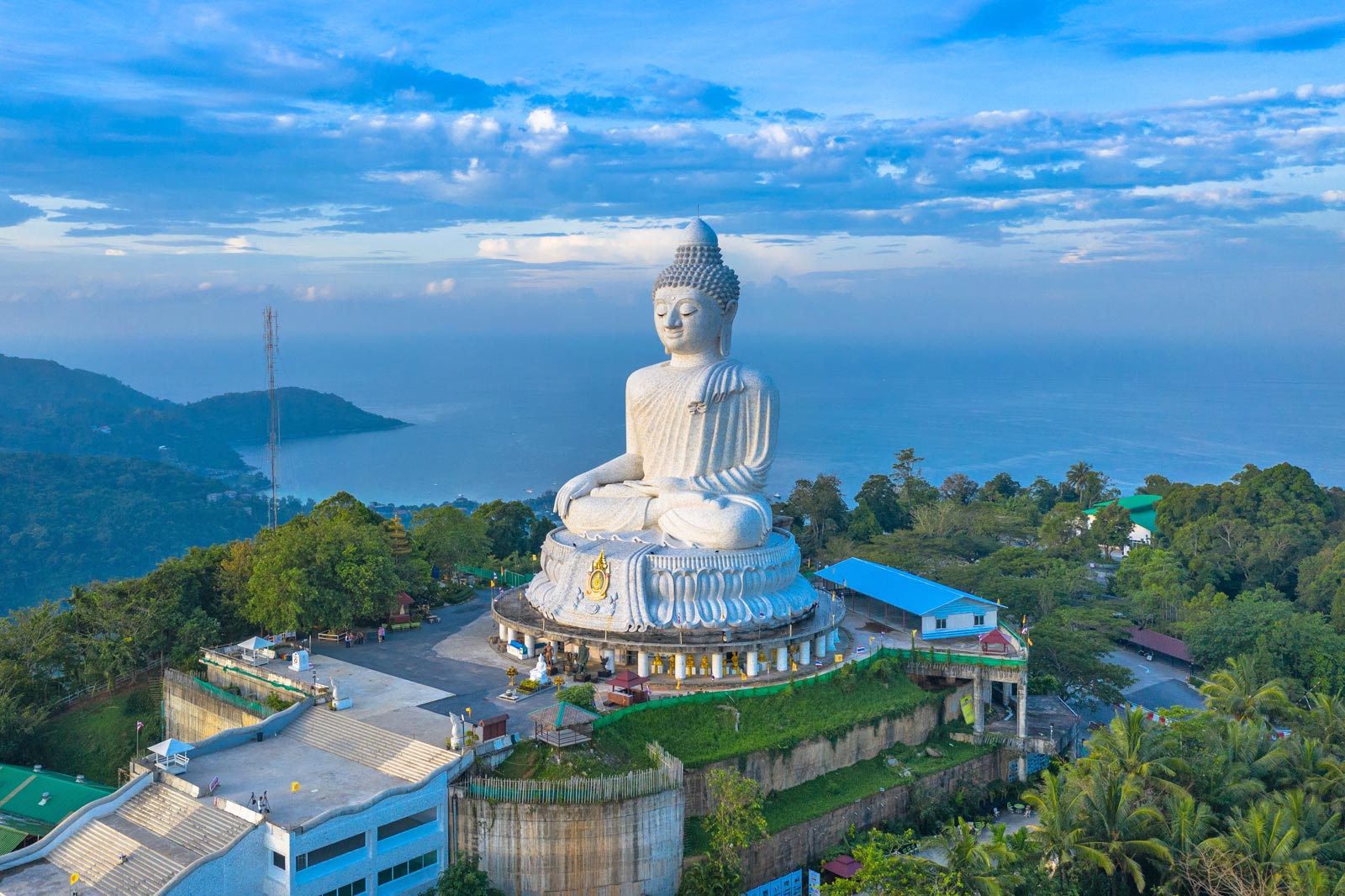
Nestled in the turquoise waters of the Andaman Sea, Phuket is Thailand’s largest and most famous island. Often called the "Pearl of the Andaman," it’s a destination that effortlessly blends natural splendor with vibrant culture, pulsating nightlife, and world-class hospitality. From the palm-fringed shores of its legendary beaches to the historic charm of its old town and the spiritual serenity of its temples, Phuket offers a kaleidoscope of experiences for every type of traveler.
This comprehensive guide will navigate you through the island’s rich history, unmissable attractions, and practical tips to help you craft the perfect tropical getaway.
A Glimpse into Phuket’s Past
Related Articles about Phuket: The Pearl of the Andaman – An Ultimate Guide to Thailand’s Island Paradise:
- Australia: A Land of Wonders – Your Comprehensive Travel Guide
- Croatia: A Timeless Tapestry of Sun-Kissed Islands, Ancient Cities, and Azure Waters
- Thailand: A Traveler’s Odyssey Through the Land of Smiles
- Echoes of Olympus: Unveiling the Best Tourist Attractions in Greece
- Unveiling the Rainbow Nation: Top Things to Do in South Africa
Before it became a global tourist hotspot, Phuket’s fortunes were built on a different kind of treasure: tin. For centuries, the island was a crucial trading post on the maritime route between India and China. Its rich tin deposits attracted merchants from across Asia and Europe, particularly the Portuguese and the Chinese, whose influence is still palpable today.
The most significant cultural imprint was left by the Hokkien Chinese immigrants who arrived in the 19th century to work in the tin mines. They brought with them their traditions, cuisine, and architectural styles, which merged with local and European influences to create the unique Sino-Portuguese aesthetic that defines Phuket Old Town. This prosperous era shaped the island’s identity, laying the foundation for the culturally rich destination we see today. A testament to its resilient spirit is the legend of the two heroines, Thao Thep Krasattri and Thao Si Sunthon, who rallied the islanders to repel a Burmese invasion in 1785, a story still celebrated by locals.
The Unmissable Attractions: Phuket’s Crown Jewels
Phuket’s allure lies in its sheer diversity. Whether you seek adrenaline-pumping adventures, serene beach days, or deep cultural immersion, the island delivers.
The Legendary Beaches
No trip to Phuket is complete without exploring its world-renowned coastline. Each beach offers a distinct personality.
- Patong Beach: The epicenter of Phuket’s energy. Patong is a three-kilometer stretch of sand that is as famous for its electrifying nightlife as it is for its water sports. By day, the beach is a hive of activity with jet skis, parasailing, and sunbathers. By night, the adjacent Bangla Road transforms into a dazzling, neon-lit spectacle of bars, clubs, and street performances. It’s loud, crowded, and unapologetically hedonistic—perfect for those looking to be in the heart of the action.
- Karon and Kata Beaches: Just south of Patong, these two beaches offer a more relaxed, family-friendly atmosphere. Karon Beach is one of the longest on the island, with powdery white sand that squeaks underfoot. Kata Beach, divided into Kata Yai (the main beach) and the more secluded Kata Noi, is a picturesque bay fringed with casuarina trees, ideal for swimming, surfing (during the monsoon season), and unwinding.
- Freedom Beach: A true slice of paradise, Freedom Beach is a pristine, 300-meter cove accessible primarily by longtail boat from Patong. The effort to get here is rewarded with exceptionally clear water, soft white sand, and a lush jungle backdrop. It’s a tranquil escape from the crowds, perfect for snorkeling and simply soaking in the natural beauty.
- Nai Harn Beach: Located on the southern tip, Nai Harn is a favorite among locals and expatriates. Nestled between jungle-clad hills, this idyllic beach boasts a deep, protected bay with calm, azure waters, making it one of the best spots for swimming. The nearby freshwater lagoon adds to its unique charm.
Cultural and Scenic Landmarks
Beyond the sand and sea, Phuket’s interior is rich with cultural treasures and breathtaking viewpoints.
- The Big Buddha (Phra Phutta Ming Mongkol Eknakiri): Dominating the skyline from its perch atop the Nakkerd Hills, the Big Buddha is Phuket’s most revered landmark. This colossal 45-meter-tall statue, crafted from white Burmese marble, gazes serenely over the island. The journey up the hill is an experience in itself, but the real reward is the stunning 360-degree panoramic view of southern Phuket, from Chalong Bay to the Kata coastline. The atmosphere is one of profound peace, punctuated by the tinkling of small bells and the soft chanting of monks. Remember to dress respectfully, covering shoulders and knees.
- Phuket Old Town: A journey back in time, Phuket Old Town is a feast for the senses. Its streets are lined with beautifully preserved Sino-Portuguese shophouses, painted in a palette of pastel colors. Wander down Thalang Road, Soi Romanee, and Dibuk Road to admire the intricate architecture, discover vibrant street art, and pop into quirky boutiques, art galleries, and charming coffee shops. On Sundays, Thalang Road closes to traffic and transforms into the bustling Lard Yai (Sunday Walking Street Market), a fantastic place to sample local food and buy unique souvenirs.
- Wat Chalong: Of the 29 Buddhist temples on the island, Wat Chalong is the most important and visited. This ornate complex is a stunning example of Thai temple architecture, with gilded roofs and intricate carvings. The Grand Pagoda is the centerpiece, said to house a splinter of Buddha’s bone. Visitors come to pay respects to revered monks, light incense, and make offerings. The temple is a vibrant center of local faith and a beautiful place to experience Thai spiritual culture.
Island Hopping and Natural Wonders
Phuket is the perfect launchpad for exploring the Andaman Sea’s geological marvels.
- Phi Phi Islands: Made world-famous by the movie The Beach, the Phi Phi Islands are the quintessential tropical paradise. A day trip typically includes a visit to Maya Bay (now heavily protected to allow for ecological recovery), snorkeling in the crystal-clear waters of Pileh Lagoon, and observing the Viking Cave. While often crowded, their staggering beauty is undeniable.
- Phang Nga Bay (James Bond Island): A geological wonder, Phang Nga Bay is characterized by hundreds of sheer limestone karsts that jut dramatically out of the emerald-green water. The most famous of these is Khao Phing Kan, popularly known as James Bond Island, after its appearance in The Man with the Golden Gun. The best way to experience the bay is by sea canoe, paddling through hidden lagoons and collapsed cave systems known as hongs.
Planning Your Perfect Trip
Best Time to Visit
Phuket’s climate is tropical, with distinct wet and dry seasons.
- High Season (November to April): This is the ideal time to visit. The weather is dry, the skies are clear, and the sea is calm and perfect for swimming and diving. This is also peak tourist season, so expect larger crowds and higher prices for flights and accommodation.
- Shoulder Season (May and October): These months mark the transition between seasons. You can find good deals and fewer crowds, but there’s a higher chance of occasional rain showers.
- Low/Green Season (June to September): This is the monsoon season, characterized by frequent and sometimes heavy rainfall. However, the downpours are often short-lived, leaving behind lush, vibrant landscapes. This is the best time for budget travelers and surfers, as the west coast beaches see excellent waves.
Essential Travel Tips
- Respect the Culture: When visiting temples, dress modestly. The traditional Thai greeting is the wai (a prayer-like gesture with the hands). A smile and a respectful attitude will go a long way.
- Stay Hydrated: The tropical heat can be intense. Drink plenty of water throughout the day.
- Bargain with a Smile: At local markets, bargaining is expected. Always do so politely and with a friendly demeanor.
- Sun Protection is Key: The sun is strong year-round. Use high-SPF sunscreen, wear a hat, and seek shade during the midday hours.
- Scooter Safety: Renting a scooter is a popular way to explore, but be cautious. Always wear a helmet, check the bike for pre-existing damage, and make sure you have an international driving permit and adequate insurance.
Where to Stay: Accommodation for Every Traveler
Phuket’s accommodation options are as diverse as its attractions.
- Luxury: For an unforgettable splurge, resorts like The Slate on Nai Yang Beach or the ultra-exclusive Keemala Phuket with its whimsical pool villas offer unparalleled luxury and service.
- Mid-Range: Areas like Karon, Kata, and Bang Tao offer excellent mid-range options. Katathani Phuket Beach Resort is a family favorite with direct beach access, while boutique hotels in Phuket Old Town provide a unique cultural experience.
- Budget-Friendly: Hostels and guesthouses are plentiful, especially around Patong and Phuket Town. Lub d Phuket Patong is a modern, social hostel, while the historic The Memory at On On Hotel (featured in The Beach) offers a charming and affordable stay in the heart of the Old Town.
A Taste of Phuket: Culinary Delights
Phuket is a UNESCO City of Gastronomy, and its food is a delicious blend of southern Thai, Chinese, and Malay influences.
- Mee Hokkien: A signature Phuket dish of stir-fried yellow noodles with seafood or pork, vegetables, and a savory broth.
- Moo Hong: A rich and flavorful dish of slow-braised pork belly in a sweet and savory soy-based sauce with garlic and black pepper.
- Gaeng Som (Sour Curry): A fiery and tangy southern Thai curry, typically made with fish and vegetables. It’s not for the faint of heart but is incredibly delicious.
- Fresh Seafood: Head to a beachfront restaurant in Rawai or a local market to enjoy fresh-from-the-ocean prawns, fish, crab, and lobster, grilled or steamed to perfection.
- Street Food: Don’t miss the opportunity to graze at a night market. Sample everything from mango sticky rice and roti pancakes to savory grilled skewers and noodle soups.
Getting Around the Island
Navigating Phuket is relatively straightforward, with several options available.
- Tuk-Tuks and Taxis: The small, red tuk-tuks are ubiquitous but can be expensive, especially for short distances. Always agree on a price before you get in. Metered taxis are a better option but can be harder to find outside of major areas.
- Ride-Hailing Apps: Grab is the most popular ride-hailing app in Thailand and often offers more transparent and competitive pricing than traditional taxis.
- Scooter Rental: For the independent traveler, renting a scooter (around 200-300 THB per day) provides the ultimate freedom to explore at your own pace.
- Songthaews: These blue, open-air local buses run on set routes between the main beaches and Phuket Town. They are the cheapest way to get around but are also the slowest.
Conclusion
Phuket is far more than just a party island. It is a destination of incredible depth and diversity, where idyllic beaches and dramatic landscapes coexist with a rich history and a world-class culinary scene. It’s a place where you can spend your morning finding serenity at a mountaintop Buddha, your afternoon exploring the colorful lanes of a historic town, and your evening watching the sun dip below the Andaman horizon. Whether you come seeking adventure, relaxation, or cultural discovery, Phuket will not only meet your expectations—it will beautifully exceed them, leaving you with memories as golden as its sunsets.








